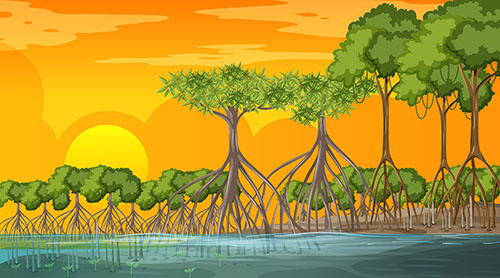Move over acai and chia, these foods are growing wild, right here in the Australian bush. By purchasing these foods directly from indigenous small businesses, you can support on-country indigenous entrepreneurs. Feel good while you do good!

1. Lemon Myrtle
A great source of calcium

Traditionally in Aboriginal culture, Lemon Myrtle has been used for both food and medicinal purposes. The leaves and flowers are used in tea blends and drinks, confectionery, syrups, liqueurs, flavored oils and more. Lemon Myrtle has antimicrobial and antifungal properties. It’s a source of Vitamin C, Vitamin E, lutein, is rich in phenolic compounds and is a great source of calcium. Available online from Kaiyu Superfoods.
2. Kakadu Plum (Gubinge)
The world’s highest source of Vitamin C

Kakadu Plum, known in the Kimberley as ‘Gubinge’ has the highest natural source of Vitamin C on Earth. Used as a fresh staple in the Wet Season, collected straight from the tree or dried and mixed with water as a drink in dry times. Available online from Kimberley Wild Gubinge or Mayi Harvests.


3. Wild lime
Rich in Vitamin C and Calcium
Australia has six species of native citrus, with the most well-known and cultivated species being the finger lime. Wild Limes can be used in any recipe requiring lemons or limes, freeze exceptionally well and are commonly used in jams, sauces and chutneys. Citrus is rich in Vitamin C and calcium and is beneficial in the digestion of protein-rich foods. Available online from Kaiyu Superfoods.

4. Pindan Walnut
Tastes like cashews when roasted
The Pindan Walnut, also commonly known as Kalumburu Almond or Pindan Quondong, occurs in isolated pockets in the Kimberley region. Outside they look like a walnut. Inside the ‘nut’ you’ll find a thick corky wood that surrounds the kernel. Eaten raw, the kernel of the nut tastes like almond, but when roasted it tastes like cashew nuts! Available online from Mayi Harvests.

5. Boab Fruit
Add this superfood to your smoothies
Boab fruit is a highly nutritious superfood with a nut-like shell and a creamy, powdery inside. Crack the shell open and you can eat the fruit (it has a tart/tangy flavour) or powder it down to add to smoothies, desserts, musli … well, you can add the powder to almost any recipe really. High in fibre, Natural pectin, antioxidants, vitamin C, electrolytes … the list goes on. Available online from Mayi Harvests.

6. Rosella
Great in jams and tea
Also known as the bush hibiscus (hibiscus sabdariffa), rosella is considered an environmental weed because it’s not native to Australia, having possibly come over from Africa or Sri Lanka. Apart from being gorgeous to look at, it’s also edible and high in vitamin c and antioxidants. A lovely addition to a glass of champagne, or great for jam and tea making. Available online from Mayi Harvests or Indigi Earth.
Thanks for reading! If any of the information has changed or if you know of more great bush foods and indigenous businesses to purchase them from, please leave a comment below 🙂




